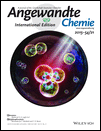Heterostructure of Si and CoSe2: A Promising Photocathode Based on a Non-noble Metal Catalyst for Photoelectrochemical Hydrogen Evolution†
We are grateful for the financial support of the Ministry of Science, Technology of Taiwan (Contract No. MOST 103-2112M-003-009-MY3 and MOST 101-2113M-002-014-MY3) and Academia Sinica (Contract No. AS-103-TP-A06). C.-G. Ma would like to acknowledge financial support from the National Natural Science Foundation of China (Grant no. 11204393).
Graphical Abstract
Heterostructures of semi-metallic CoSe2 nanorods and p-Si microwires behave as an efficient photocathode for the solar-driven hydrogen evolution reaction. Photocurrents as high as 9 mA cm−2 have been achieved at 0 V vs. reversible hydrogen electrode. The high photocurrents can be attributed to low charge transfer resistance between the Si and CoSe2 interfaces and between the CoSe2 and electrolyte interfaces.
Abstract
Development of a solar water splitting device requires design of a low-cost, efficient, and non-noble metal compound as alternative to noble metals. For the first time, we showed that CoSe2 can function as co-catalyst in phototoelectrochemical hydrogen production. We designed a heterostructure of p-Si and marcasite-type CoSe2 for solar-driven hydrogen production. CoSe2 successively coupled with p-Si can act as a superior photocathode in the solar-driven water splitting reaction. Photocurrents up to 9 mA cm−2 were achieved at 0 V vs. reversible hydrogen electrode. Electrochemical impedance spectroscopy showed that the high photocurrents can be attributed to low charge transfer resistance between the Si and CoSe2 interfaces and that between the CoSe2 and electrolyte interfaces. Our results suggest that this CoSe2 is a promising alternative co-catalyst for hydrogen evolution.





